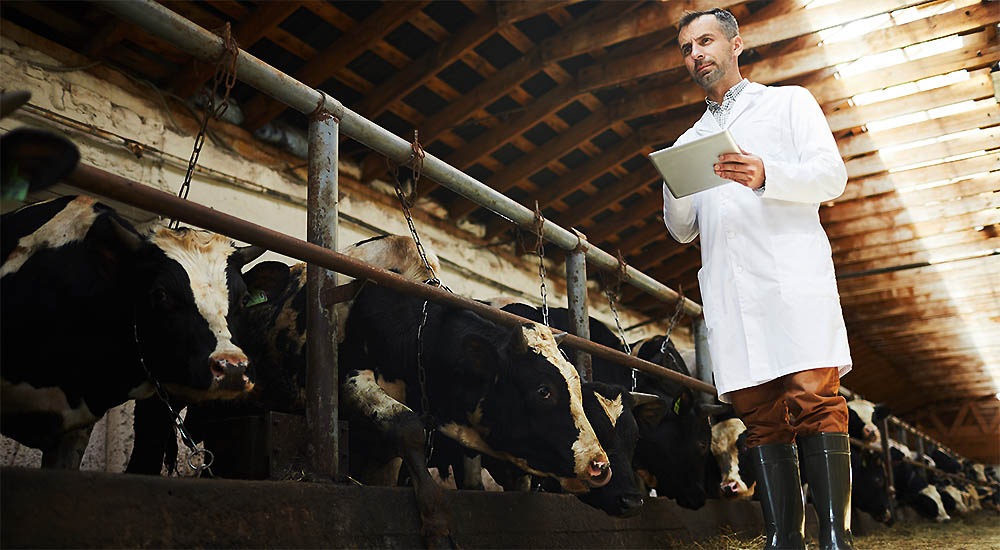You Should Know What You’re Eating… If You Have the Stomach For it

You Really ARE What You Eat
Bodies require food to function. Better food equals better functioning. It doesn’t seem like rocket science, does it?
Yet, as a Clinical Nutritionist here at Root Cause Medical Clinic, I am constantly met with surprise from my patients when they realize that what they eat (and don’t eat) makes a marked difference in how they feel. Why is it so surprising? Our society and our parents, these days, just don’t teach us this truism.
There is that great expression: “You are what you eat.” But apparently, it is rarely put into practice in current society. As a corollary, if I asked you to put water in your gas tank instead of gasoline, you’d look at me in horror.
Why am I suggesting something so outlandish, you would ask? And quite right too. Your car would not be happy with water in its gas tank and it would quickly develop signs of “poor health”. Why then do we think that we can put chemicals, hormones, pesticides, plastics, known carcinogens, and animal byproducts in our body and somehow “get away with it”?
You can replace your car if you really mess it up. You can’t replace your body… There’s a new documentary out called “Food”. It is produced by KPBS out of San Diego and you can watch it here (http://www.kpbs.org/news/envision/food/) – it’s only 30 minutes. Unlike “Forks over Knives”, which I also highly recommend (watch it here: http://www.youtube.com/user/ForksOverKnives), “Food” has only a few seconds that you wouldn’t want your children to see. “Forks over Knives” is a bit more graphic, for longer, but hey, you’re an adult, “put on your big boy/girl panties” and learn the truth about your food.
I live in California, the largest supplier of food in our country. While I care about what everyone eats, I was under the misimpression that what I ate was likely grown here. Nope. At least not when it comes to certain foods.
Why Californians Won’t Eat Their Own Oranges
Let’s start with the easy stuff and look at oranges. While much of the world enjoys California oranges, it turns out the Californians aren’t one of them. Talk about a waste of energy…Did you know that California oranges are enjoyed in far-away lands such as Japan while the oranges we import TO California hail from Australia? Why?
It’s certainly not because California oranges aren’t delicious, they are. But we don’t like them as much as the ones from Australia because they aren’t perfectly orange, they are harder to peel and they have seeds. Heaven forbid! Fruit with seeds… And for that reason, we spend a ridiculous sum of money to transport food grown thousands of miles away TO us for our own “picky” consumption. But at least oranges are healthy. Let’s move on to the less healthy part of our diets.
Millions of Pounds of Beef Recalled, Why?
Last year the largest meat recall in history was issued from a California meat company. One hundred forty-three million pounds of beef were recalled after a video given to the humane society revealed sick cows being dragged to slaughter. It’s illegal, obviously, to use sick animals in our meat supply, but the video revealed that it does happen. How often? Would we have ever known about this particular incident if someone hadn’t cared enough to share the footage with the humane society? We may never know.
Questions were sent to the FDA from the producers of the “Food” documentary, but the FDA didn’t respond. The producers of the video did discover that government and trade association websites do contain such information, so apparently, if you really want to dig and research, you can discover this information. I think you’ll agree, most Americans don’t have nor want to take the time to peruse government websites, trade journals, or scientific research journals. We just would like to assume that someone has the common decency to not feed us meat from a sick animal.
Our Cattle are Fat and Unhealthy – What Does That Mean for Consumers
Americans do like their beef. We make up 5% of the world’s population, but consume 20% of the beef produced. Sick and dying animals aside, what do the “healthy” animals get fed?
Here in California, they start on grass for the first 6 months – Yay! They actually begin life on what they’re supposed to eat. Well, they would have to because if you started them out eating what they ate shortly before slaughter, they’d likely fall into that sick and dying category that makes it illegal to feed them to us.
(This last sentence is completely my opinion – I have no research to back it up.) After 6 months, they are sold and moved, typically twice in their short lives, and end up on feedlots where they are fed corn while being kept in pens that house tens of thousands, up to 100,000 heads for the last 4 to 5 months of their lives. That corn-based diet fattens them up nicely (corn fattens up humans too!) so that they can be slaughtered in half the time it took a generation ago. Not only are they fed unhealthy, fattening, GMO corn (yes about 97% of all corn in the U.S. is GMO), but they are all injected with hormones. Why?
The corn creates an abundance of tough fat in the animals that Americans don’t like to chew, so hormones are injected into more lean muscle, increasing profits. It’s interesting on the video to watch the reporter point out to the farmer she’s interviewing that cattle wouldn’t need to be injected with hormones to decrease fat if we just stopped feeding them the corn that’s making them fat.
The farmer just doesn’t want to look at that possibility. And of course, realize that when humans eat the meat it means that we’re ingesting synthetic hormones, many of which have been associated with a variety of diseases. Stay tuned for my upcoming book, “The Dairy Effect” for more on that topic.
In our desire to feed more people for less money while making a profit, the food industry somehow decided that cattle shouldn’t eat grass and fish shouldn’t eat fish. [A quick historical note on the price of food: We spend less money on our food than we did a couple of generations ago. Good news? Not when the “food” is making you sick.]
Our Fish are Eating Cattle and Chickens Eat Fish… What??
What should our animals eat? According to the “experts” that produce our food wholesale, it’s a great idea for fish to eat cattle, cattle to eat corn. and chickens to eat fish… Sound ludicrous? Read on… I’ll admit that when I first heard of farm-raised fish many years ago, I thought it was a good idea. I remember exactly where I was – across the fish counter at my local
Whole Foods speaking to my friendly fish market employee. I used to love salmon and was suspicious when he said it was farm-raised. I tried to picture fish on a “farm”; it seemed comical. But he explained that due to the pollution in the sea, farms were a way of controlling the environment and ensuring the fish were fed well. I certainly knew about the ill health of our seas (especially the Atlantic) and eschewed salmon from there. This did seem like a good idea – or was it?
It’s certainly become popular. Half of the world’s seafood now comes from fish farms. Similar to our cattle industry, farmed fish suffers many of the same drawbacks, quality. We may be “what we eat”, but so is that true for what we are choosing to eat – What did IT (the fish, cattle, chicken) eat?
Animals are “designed” to digest and assimilate certain foods. Much like we have trouble with cow’s milk since we aren’t baby cows, fish, as you can imagine, would NEVER come across chicken and beef byproducts, soy, chicken feathers (yes, no typo) and cattle blood while swimming along in their natural habitat. Yet that’s what we choose to feed them on those fish farms.
Why on earth would such items ever be fed to fish? It turns out that in the case of salmon, it takes 5 pounds of fish fed to the salmon to increase the salmon’s weight by 1 pound. That 5:1 ratio is just too expensive if you’re feeding the salmon actual fish. So instead we feed some disgusting byproducts that should, by all rights, be thrown away. Do you think this “diet” is going to produce healthy fish? And what’s it going to do to you when you eat the salmon flesh?
We Feed Our Cattle Animal Byproducts – It’s Outlawed in Europe
European nations won’t feed byproducts from cattle to their animals or humans. They’re worried about mad cow disease. It’s illegal, even in the U.S. to feed cattle byproducts to cattle for that very reason. But in a legal loophole, gotta love those attorneys, there was never a mention in the law of feeding cattle byproducts to fish. So “legally” you can do it. I ask you – Is that the real question here?
Is the “letter of the law” what these fish farmers should be concerned about? How about the people, innocent human beings, eating their fish? Maybe that should be their concern. It should be but apparently, it isn’t. So because it’s not illegal, some fish farms feed cattle byproducts to their fish.
We Americans like our chicken too. But we like white meat better than dark meat. Oh, okay, says the food industry, you like white meat better, no problem, we’ll just manufacture breeds of chickens with bigger breasts.
Breeding Chickens that are Freaks of Nature – all for Some White Meat
You’ll see them in the video. These chickens can’t walk because their breasts are so large. They can’t get out of the sun or walk around the yard because they are freaks of nature.
Chicken facilities house tens of thousands of chickens who are predominantly fed corn and chicken feathers and byproducts –yuck. Antibiotics are routinely used on chickens even though labels can still say “natural” and “free-range”, nothing could be further from the truth.
The legal definition of “free-range” is a few minutes a day outdoors on a barren lot. Not the picture you get of a healthy chicken running around a healthy pasture where they can eat bugs, worms, and plants – their natural diet. I used to say look for the “cage-free” label, but that too has been altered to fit the letter of the law while having nothing to do with what the words actually mean and sadly can be found despite a less than the healthy condition of these animals. And such conditions do not result in healthy eggs or chickens, as we at Root Cause Medical Clinic will assure you.
“Pasture Raised” Means Happy, Healthy Chickens and Eggs
“Pasture-raised” and “formally certified organic accreditation” are the words you want to look for when buying your eggs and chickens. The organic accreditation comes with a logo on the packaging and is proof that the chicken is free from additives. Similarly, certified organic poultry is guaranteed to be antibiotic-free. Without this guarantee, conventional chickens can be fed antibiotics to prevent disease as well as be exposed to chemical agents in their feed.
That’s all “legal” and they can still be called “free-range”. As of this writing, “pasture-raised” means that the hens roam freely outdoors on a pasture where they can find the green plants, insects, seeds, and worms that are their natural food.
Certified organic accreditation is an elite standard that may be difficult to find in that it is cost-prohibitive to many farmers. Therefore if you cannot find a local farm that complies, try to find one that raises its chickens according to organic, pasture-raised standards. The key item to look for is a hen that is outdoors freely eating its natural diet while antibiotics, corn, and soy are not on the diet.
I remember my first breakfast in Italy a few years ago. I shelled a hard-boiled egg to reveal an egg yolk that was bright orange – the mark of a hen enjoying the great outdoors along with a healthy diet – and it was delicious. Upon returning to the U.S., I was completely turned off by my first egg that revealed a pale yellow yolk.
Not surprisingly, those lovely orange yolks weren’t just beautiful and tasty but they are more nutritious: they have twice the levels of omega-3 fatty acids, three times more vitamin E, and seven times more beta carotene! Now that’s an egg worth eating.
If you buy from a local farmer whom you can actually speak to at a Farmer’s Market or co-op, you can get a feel for his or her passion for the animals he raises. There are many farmers who do care about you and what you eat and they have high principles. It’s easy to pop that burger or chicken nugget in your mouth and call it food. But dig, just a little, for more information on where it came from and you will likely not want to eat it. Sadly our vegetables and fruits are not free from these unhealthy practices. GMO plants and pesticides do not yield healthy crops and the animals and humans who eat them suffer.
Here’s How to Find Healthier Food
Don’t think that I’m saying all is lost. It isn’t. It just isn’t easy. We have to work a bit to get healthy food and we have to learn to reacquaint ourselves with a room in many homes that sees little action – the kitchen. And I’m not just talking about the refrigerator and the microwave, but the stovetop and the oven. Yes, I’m trying to be a little sarcastic, but just a little. It’s the truth. We have to start cooking and teaching our children to cook and enjoy it!
What Can We Do?
1. Find a local Farmer’s market or food co-op and frequent it. These are people you can trust who are passionate about the quality of their food. Supporting them makes it possible for us to truly eat healthfully.
2. Buy organic whenever possible. When it’s not possible, buy from someone who can confirm the food is non-GMO. We are learning a lot about GMO food and unfortunately, it’s downright dangerous to eat. I’d rather you eat frozen vegetables that are organic than fresh that are GMO.
3. Let your local grocery store and favorite family restaurant know that you’d like them to stock more organic produce from local farmers. Let them know that you plan to go elsewhere until they do. There needs to be a grassroots movement supporting local, organic, and sustainable from the citizens of our country in order for change to happen.
4. You’re going to have to start cooking. I’m sorry, but you need to do it for your children at least, if not for yourself. Growing up in a kitchen that produces healthy, good tasting food will set your children up for good health as adults.
Frankly, in this day of Food Network and YouTube videos, there is really no excuse for, “I don’t know how to cook” anymore. Spend a little time online or watching Food Network; you’ll learn. It’s fun and you’ll save lots of money cooking at home.
Growing up we had a big freezer in our basement. In it, my mother always had pasta sauce, soup, lasagna, and other items she had made in abundance. They froze well and they were always there as a quick, healthy meal when she wasn’t feeling well or wanted to go out of town and didn’t want to worry about what the rest of us were eating.
5. Grow your own food. Here in California we certainly have no excuse to not do this. Considering the amount of food grown in this ideal climate, we can definitely get some easy growing vegetables going. But each area of the country is able to grow food.
The best idea I’ve heard is to get together with neighbors and grow different things that can be shared. Even one zucchini plant can yield more of that vegetable than one family can consume. But imagine you’re growing the zucchini and kale, while your neighbors are growing the lettuces and carrots. A few families can support each other very inexpensively.
The facts are that changes in our food practices and food quality are not going to occur at the governmental level. They are going to occur with us, the citizen, and we are going to having to embarrass our government into taking the correct action. We have closed our eyes for too long on what’s happening with our food. It’s time to take a long hard look, confront the truth, and act.
Please Share this Information
Let me know your thoughts and if you’d like any assistance in taking action. And if you like this information I encourage you to share it with family and friends.
Do you need help with your health?
We have the diagnostic and testing tools, the clinical experience, and a different medical approach to discovering the root cause of why you have the symptoms that are bothering you. As long as you are ready to make some dietary and lifestyle changes, we can help you. We will "hold your hand" through the changes, step by step, to make each step an easy one. We are located in Clearwater, FL, at 1000 S Ft Harrison, at the corner of Ft. Harrison Ave. and Magnolia St. There is plenty of parking space directly accessible from Ft Harrison. If it is not convenient for you to come to Root Cause Medical Clinic, we offer telehealth/telemedicine consultations to residents of certain states. Call us for details.
Contact us for a Consultation – Call 727-335-0400

Dr. Vikki Petersen DC. CCN
Founder of Root Cause Medical Clinic
Certified Functional Medicine Practitioner
Dr Vikki Petersen is a public speaker, author of two books, several eBooks and creates cutting edge content for her YouTube community. Dr Vikki is committed to bringing Root Cause Medicine and its unique approach to restoring health naturally to the world.
Ask a Doctor
Have a health concern you'd like to speak with a doctor about? Or just want clarity on a subject? Ask Us!


